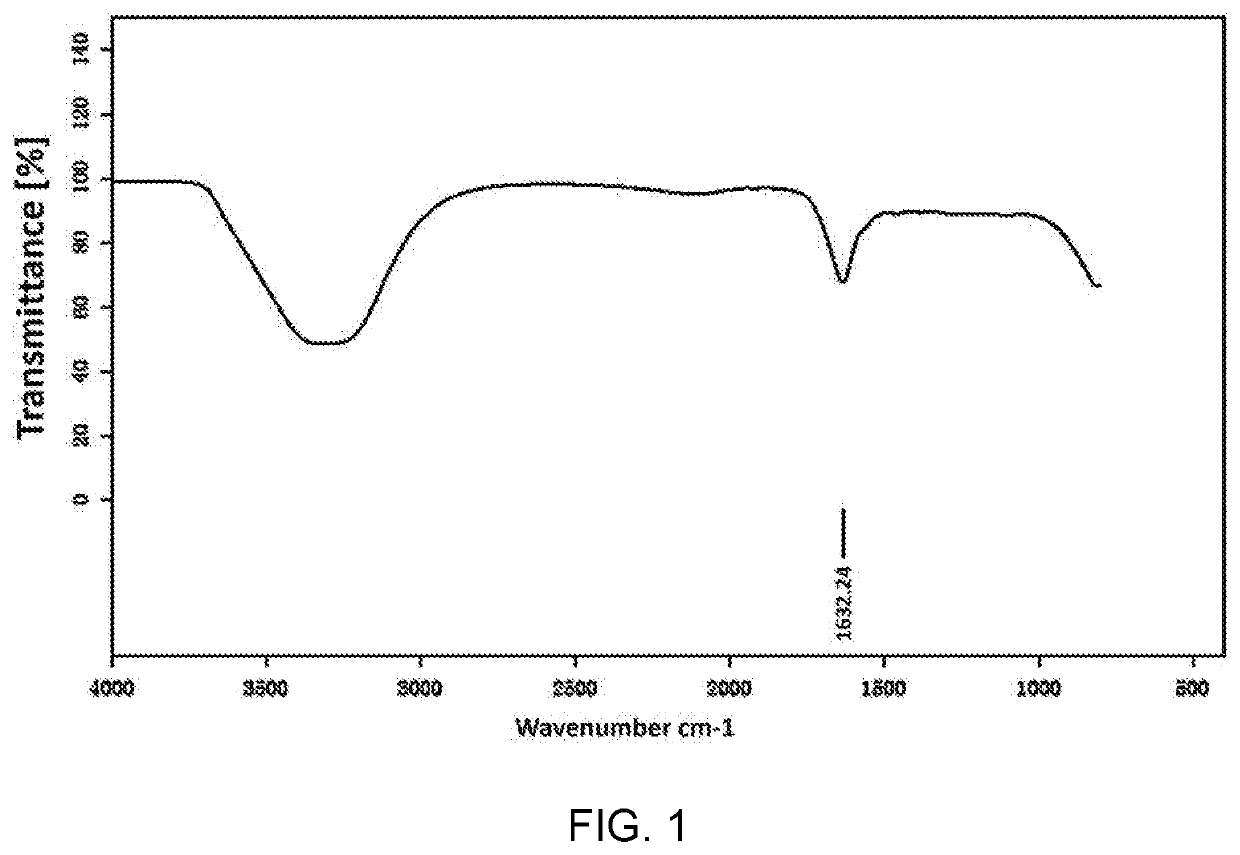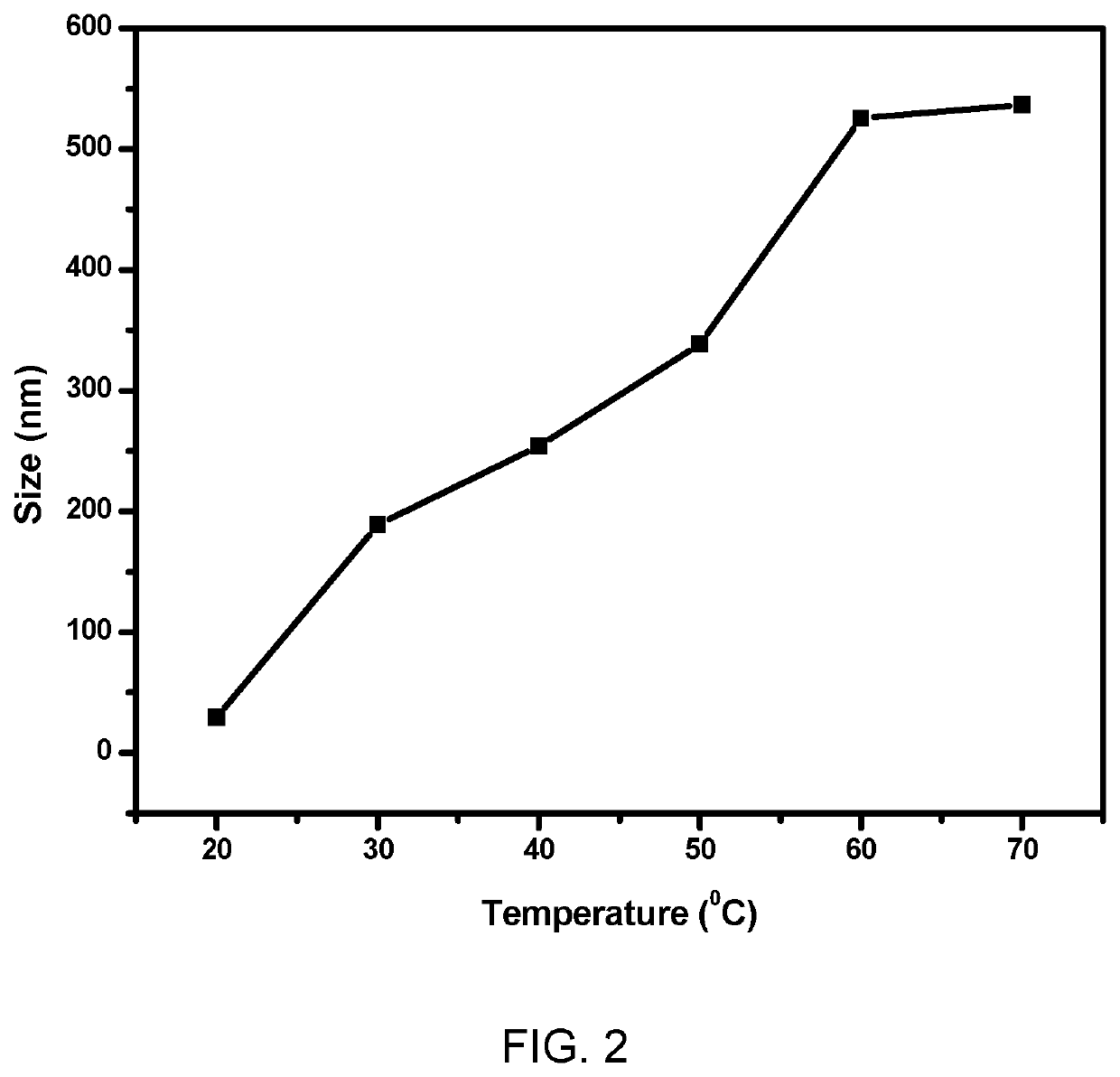Preparation method of temperature/ph-responsive polycarboxylic acid
a technology of polycarboxylic acid and temperature response, which is applied in the field of preparation of comb structure temperature/ph-responsive polycarboxylic acid, can solve the problems of reducing the overall strength of concrete, affecting aesthetics, and cracking and other defects of hardened concrete, so as to improve the stability of hardened concrete, improve market competitiveness, and improve the effect of application prosp
- Summary
- Abstract
- Description
- Claims
- Application Information
AI Technical Summary
Benefits of technology
Problems solved by technology
Method used
Image
Examples
embodiment 1
[0053]Firstly, 30 g tetrahydrofuran, 30 g methyl acrylate and 12.54 g isopropanol is added into the reactor, heat to 50° C. with agitation, then add a mixture solution which consist of 2.86 g azodiisobutyronitrile and 2.86 g tetrahydrofuran for 12 h. After dropping, continue reaction for 6 h at a constant temperature of 50° C. to obtain self-polymerization product polymethyl acrylate solution. Adjust the temperature of the obtained self-polymerization products at 50° C. and add 35.22 g n-dodecyl mercaptan with 40 minutes agitation until the mixture is evenly mixed, then add a mixture solution which consist of 393.80 g N-isopropyl acrylamide, 28.57 g azodiisobutyronitrile and 28.57 g tetrahydrofuran for 12 h. After dropping, continue reaction for 6 h at a constant temperature of 50° C., then process decompressed distillation to remove tetrahydrofuran to obtain the graft copolymerization products. Mix 423.80 g graft copolymerization products with 62.64 g deionized water, heat to 30° C...
embodiment 2
[0054]Firstly, 210 g tetramethylene sulfone, 30 g butyl acrylate and 6.47 g 3-mercapto-1-propanol is added into the reactor, heat to 110° C. with agitation and add a mixture solution which consist of 2.53 g tert-butyl hydroperoxide and 10.13 g tetramethylene sulfone for 3 h. After dropping, continue reaction for 2 h at a constant temperature of 110° C. to obtain self-polymerization product polybutyl acrylate solution. Adjust the temperature of the obtained self-polymerization products to 90° C., add 24.85 g 3-mercaptopropionic acid with 20 minutes agitation until the mixture is evenly mixed, then add a mixture solution which consist of 148.68 g N-n-tert-butyl acrylamide, 12.66 g tert-butyl hydroperoxide and 50.63 g tetramethylene sulfone for 3 h. After dropping, continue reaction for 2 h at a constant temperature of 90° C. and process decompressed distillation to remove tetramethylene sulfone to obtain the graft copolymerization products. Mix 178.86 g graft copolymerization products...
embodiment 3
[0055]Firstly, 270 g dimethyl sulfoxide, 30 g amyl acrylate and 1.27 g isopropanol is added into the reactor, heat to 70° C. with agitation, then add a mixture solution which consist of 6.56 g tert-butyl peroxybenzoate and 59.02 g dimethyl sulfoxide for 8 h. After dropping, continue reaction for 4 h at a constant temperature of 70° C. to obtain self-polymerization product polyamyl acrylate solution. Adjust the temperature of the obtained self-polymerization products to 80° C., add 32.03 g n-dodecyl mercaptan acid with 25 minutes agitation until the mixture is evenly mixed, then add a mixture solution which consist of 97.59 g N-N′-methylene bisacrylamide, 19.67 g tert-butyl peroxybenzoate and 177.04 g dimethyl sulfoxide for 6 h. After dropping, continue reaction for 3 h at a constant temperature of 80° C. and process decompressed distillation to remove dimethyl sulfoxide to obtain the graft copolymerization products. Mix 127.56 g graft copolymerization products with deionized water a...
PUM
| Property | Measurement | Unit |
|---|---|---|
| constant temperature | aaaaa | aaaaa |
| temperature | aaaaa | aaaaa |
| constant temperature | aaaaa | aaaaa |
Abstract
Description
Claims
Application Information
 Login to View More
Login to View More - R&D
- Intellectual Property
- Life Sciences
- Materials
- Tech Scout
- Unparalleled Data Quality
- Higher Quality Content
- 60% Fewer Hallucinations
Browse by: Latest US Patents, China's latest patents, Technical Efficacy Thesaurus, Application Domain, Technology Topic, Popular Technical Reports.
© 2025 PatSnap. All rights reserved.Legal|Privacy policy|Modern Slavery Act Transparency Statement|Sitemap|About US| Contact US: help@patsnap.com



